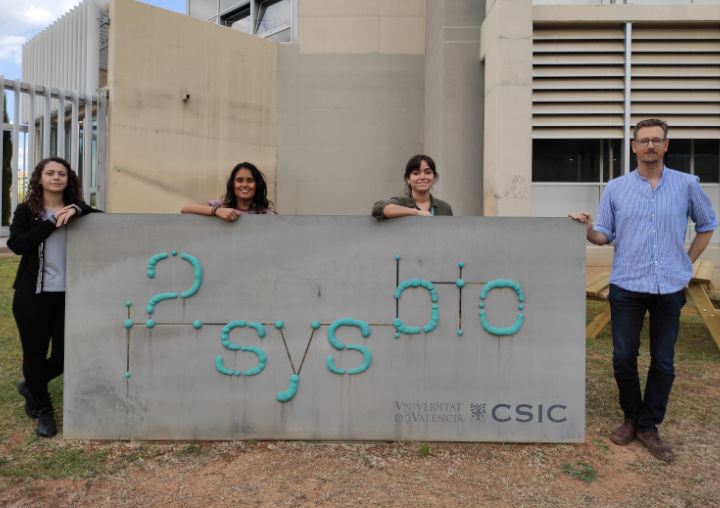Users
Social media
- More details here...
- Address
Parc Científic de la Universitat de València C/
Catedrático Agustín Escardino, 9
46980 Paterna (Valencia) Spain - Email:
iu.i2sysbio@uv.es - Phone:
(+34) 963544810
- Address
Links
The bacterial load of chewing gum lasts even weeks after being on the ground

Investigation
The bacterial load of chewing gum lasts even weeks after being on the ground

Research staff from the Institute of Integrative Systems Biology (I2SysBio), a joint center of the University of Valencia and the CSIC, have analyzed bacteria from used chewing gum from five different countries. The research, just published in the journal Scientific Reports, shows that the bacterial load of chewing gum changes in a matter of weeks and that oral bacteria last a surprisingly long time when the gum is on the ground. This research can be applied in forensic medicine or control of contagious diseases.
The study focuses on the distribution of bacteria according to the depth at which they are found (superficial, intermediate and lower layers of the residue), the biodegradation capacity of the chewing gum ingredients and the microbial successions after spending three months of exposure to the open air. The bacterial diversity of the samples has been analyzed through Massive DNA Sequencing (NGS).
Chewing gum is waste that remains for a long time on indoor and outdoor surfaces, stuck on buildings or even on works of art. For this study the team collected a total of ten samples, two in Spain, France and Singapore, and one in Greece and Turkey. They were all collected from the ground with a sterilized scraper and transported to the laboratory, where they were kept at a temperature of -80 °C until analysis.
According to researcher Manuel Porcar, "chewing gum could be vectors of bacterial diseases for a long time after being thrown onto the ground. We have found bacteria that can be used to clean the gum itself, because they eat it!" The expert adds that "chewing gum has a bacterial load that evolves from an oral microbiome to an environmental one in a matter of weeks. Oral bacteria last a surprisingly long time once the gum is on the ground. In addition, many of the bacteria that we have isolated from older gum have the potential to bioremediate the gum itself, that is, degrade it."
The I2SysBio research team points out that these long-lived residues have been used for human genetic analysis in criminology and archeology and also highlights that their findings have implications for a wide range of disciplines, including forensic medicine, the control of contagious diseases or the already mentioned bioremediation of chewing gum residues.
The article signed by Leila Satari, Alba Guillén, Àngela Vidal-Verdú and Manuel Porcar describes a complete characterization of the bacterial content of chewing gum using culture-dependent and culture-independent techniques, unlike other research that focuses on improving the cleaning of discarded gum, making it less adhesive, water-soluble or degradable. Furthermore, the team highlights that this adhesive material “may contain an important fraction of the oral microbiota, toxins and some pathogens such as Streptococcus spp. and Actinomyces spp., which remain trapped in the sticky residue and where their survival over time has received very little attention.”
Article: Satari, L., Guillén, A., Vidal-Verdú, À. et al. «The wasted chewing gum bacteriome». Sci Rep 10, 16846 (2020). https://doi.org/10.1038/s41598-020-73913-4


